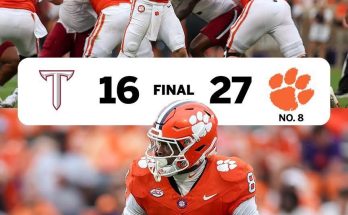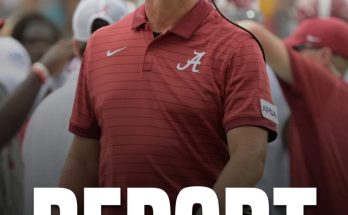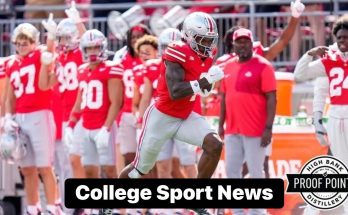The swirling winds of scrutiny perpetually buffet college football head coaches, particularly in the unforgiving crucible of the Southeastern Conference (SEC). Every decision, every public appearance, every perceived misstep is magnified under the intense gaze of passionate fanbases, ravenous media, and an increasingly interconnected social media landscape. This season, the eye of the storm has settled squarely on Auburn Tigers head coach Hugh Freeze, not for on-field performance – though that remains a constant pressure point – but for his penchant for golf outings. This seemingly innocuous hobby has ignited a fiery backlash, prompting an unexpected and robust defense from none other than SEC Commissioner Greg Sankey, a move that offers a fascinating glimpse into the complex dynamics of leadership, public perception, and the evolving demands placed upon those at the helm of multi-million dollar athletic programs.
The genesis of this current controversy lies in Auburn’s recent struggles. A dismal 2-6 SEC record in the previous season, failing to qualify for a bowl game for only the fourth time this century, has left the Auburn faithful restless and demanding answers. Compounding this on-field disappointment are concerns about recruiting, particularly as arch-rival Alabama continues to land top-tier talent, and, more recently, the arrests of two Auburn players on serious charges. In this charged atmosphere, the sight of Coach Freeze frequently on the golf course, documented through various social media posts and media reports, has become a lightning rod for criticism. The narrative quickly took hold: if the team is struggling, if recruiting needs a boost, if player conduct is an issue, then why is the head coach spending so much time on the links? This sentiment gained further traction when Ole Miss coach Lane Kiffin, a master of social media and subtle jabs, publicly mocked Freeze for his golf participation, even referencing a local Ryder Cup-style event. Freeze, for his part, attempted to address the criticism at SEC Media Days with a defiant, albeit humorous, retort about his low scores, but his defense only seemed to fuel Kiffin’s initial point – suggesting, to some, that his golf game might be sharper than his team’s performance.
The public outcry, amplified by the immediate and unfiltered nature of platforms like Twitter, highlights a significant shift in the expectations placed upon public figures, especially in the digital age. In a pre-internet era, a coach’s leisure activities would largely remain private. Today, every round of golf, every vacation photo, every offhand comment can be instantly disseminated and dissected, becoming fodder for widespread debate and often, condemnation. This hyper-transparency creates an environment where optics often trump reality, and the perception of commitment can become as important as actual dedication. For a coach leading a program with the passionate following and financial investment of Auburn, this means that even personal time can be scrutinized as a reflection of their professional priorities. The argument from critics is clear: if the team is not performing to expectations, every moment of the coach’s time should be dedicated to rectifying those issues, leaving no room for perceived distractions, even if those distractions are a legitimate form of stress relief.
However, the idea that a coach’s commitment can be solely measured by the amount of “visible work” they perform, particularly in the public eye, is a narrow and often misleading perspective. The demands on a modern college football head coach are immense and relentless. They are not merely strategists and tacticians; they are CEOs of multi-million dollar enterprises, responsible for managing vast staffs, recruiting elite talent, fundraising, navigating complex NIL (Name, Image, and Likeness) regulations, maintaining academic standards, and fostering a positive team culture, all while under constant pressure to win. The mental and emotional toll of this profession is staggering, and without effective mechanisms for stress reduction and personal well-being, burnout is not just a possibility, but a probability.
It is precisely this often-overlooked aspect of coaching that SEC Commissioner Greg Sankey emphasized in his defense of Hugh Freeze. Sankey, a seasoned and respected leader in college athletics, stepped into the fray, labeling the criticism as “misplaced” and highlighting the critical importance of balance and relaxation for coaches amidst their intensely stressful roles. He drew parallels to past instances where other prominent SEC coaches, such as the legendary Steve Spurrier, faced similar backlash for their leisure activities, yet continued to lead successful programs. Sankey’s intervention was not a blanket endorsement of excessive leisure, but rather a principled stand against the hyper-critical public narrative that equates personal time with a lack of dedication. His message was clear: a coach’s effectiveness is not solely determined by the number of hours they appear to be toiling, but by their overall well-being, their ability to manage stress, and their capacity to return to their demanding roles refreshed and focused. He understands that a healthy and well-rested coach is ultimately a more effective coach, capable of making better decisions, connecting more authentically with players, and navigating the inevitable challenges of a high-pressure environment.
Sankey’s defense is rooted in a deeper understanding of leadership in complex organizations. Effective leaders, regardless of their industry, recognize the importance of mental and physical well-being. The constant demands of strategic planning, crisis management, and personnel development necessitate periods of detachment and rejuvenation. For a college football coach, golf can serve as more than just a pastime; it can be a valuable outlet for stress, a way to clear one’s head, and even, in some cases, a networking opportunity with influential boosters and donors – though the latter is certainly not the primary focus of Sankey’s defense. The ability to compartmentalize and find healthy escapes from the relentless pressures of the job is a hallmark of sustainable leadership.
Furthermore, the controversy surrounding Freeze’s golf outings inadvertently shines a light on the broader issue of public perception and the ethics of coaching in the modern era. While coaches are expected to be tireless in their pursuit of excellence, there is an unspoken expectation of a certain level of asceticism, particularly when results are not meeting expectations. The public often demands that coaches embody a single-minded devotion to the program, to the exclusion of all personal interests. This expectation, while understandable from a passionate fan’s perspective, is ultimately unrealistic and unsustainable for individuals in such demanding roles. It creates a culture where outward appearances are scrutinized over genuine effectiveness, and where coaches may feel pressured to perform “work theatre” rather than genuinely prioritize their mental health.
The intense scrutiny is also a byproduct of the financialization of college sports. With coaches earning multi-million dollar salaries, the public feels an intensified sense of ownership and a corresponding right to dictate how their time is spent. This financial lens often distorts the conversation, reducing complex human beings to mere cogs in a win-loss machine, where every second not explicitly dedicated to “football activities” is seen as a betrayal of their lucrative contract. However, it’s crucial to remember that even highly compensated professionals require a semblance of personal life and mechanisms to manage the immense pressure that accompanies such salaries.
Moreover, the discourse around Hugh Freeze’s golf outings underscores the delicate balance coaches must strike between their professional obligations and their personal lives. While the SEC and individual institutions do not typically have explicit rules governing a coach’s personal leisure time, there is an implicit understanding of professional conduct and commitment. The line between healthy stress relief and perceived indifference can be incredibly thin, and it is often drawn by the prevailing sentiment of the fanbase and the team’s performance. When a team is winning, a coach’s hobbies are often seen as eccentricities or even beneficial forms of relaxation. When a team is struggling, those same hobbies can be weaponized as evidence of a lack of commitment or focus. This highlights the double-edged sword of public opinion in college sports: success brings widespread adoration, but failure brings intense and often unforgiving criticism that extends beyond the field of play.
From an educational standpoint, this entire episode offers valuable lessons for aspiring leaders, not just in sports, but in any high-pressure field. It demonstrates the importance of cultivating resilience and developing healthy coping mechanisms for stress. It also highlights the challenges of managing public perception in an age of instant communication and perpetual scrutiny. Leaders must be aware that their actions, both professional and personal, will be subject to intense examination, and they must be prepared to articulate their rationale and defend their choices, even when those choices are deeply personal. Furthermore, it underscores the responsibility of leadership, like that demonstrated by Commissioner Sankey, to provide a nuanced and informed perspective when public discourse becomes overly simplistic or unfairly critical.
The broader implications extend to the very nature of college athletics. The increasing demands on coaches, coupled with the relentless pressure to win and the constant public scrutiny, contribute to a challenging environment that can be detrimental to long-term success and personal well-being. There is a critical need for a more balanced understanding of what constitutes effective leadership in this context. It’s not just about X’s and O’s, or even endless hours in the office; it’s about strategic thinking, personnel management, emotional intelligence, and crucially, self-care. Without coaches who are well-adjusted and able to manage the intense pressures, the quality of leadership and, by extension, the student-athlete experience, can suffer.
In conclusion, the backlash against Auburn football head coach Hugh Freeze over his golf outings is far more than a trivial discussion about a leisure activity. It is a microcosm of the complex pressures and expectations placed upon college football coaches in the modern era, amplified by the immediacy of social media and the passionate, often unforgiving, nature of fanbases. Greg Sankey’s intervention, defending Freeze and emphasizing the importance of balance and stress relief for coaches, serves as a crucial reminder that effective leadership in high-stakes environments requires more than just tireless work; it demands mental resilience, personal well-being, and the ability to navigate a public sphere that often prioritizes perception over a holistic understanding of performance. As college football continues to evolve, the discourse around coach well-being and the nuanced demands of their roles will undoubtedly become increasingly relevant, prompting a re-evaluation of how success is defined and how those at the pinnacle of the sport are supported and understood. The situation with Hugh Freeze and Greg Sankey is a timely and valuable case study in the ongoing evolution of leadership in the highly scrutinized world of major college athletics.



